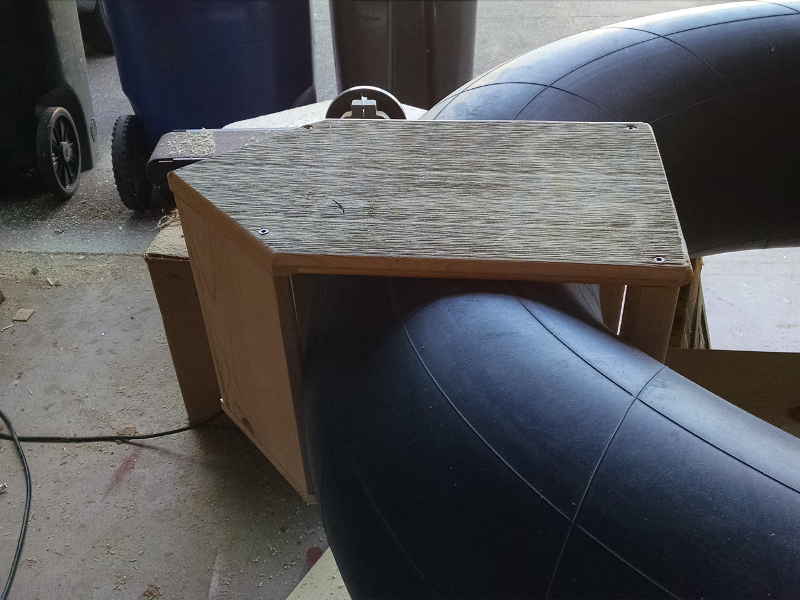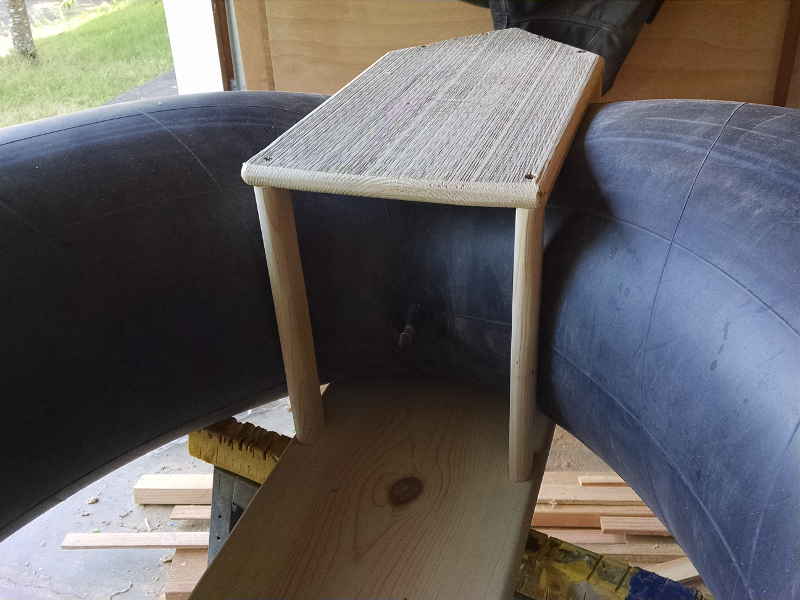
|
Corky 1.5 When last we left the Corky, things were not well. She'd had terrible sea trials - just blew down wind like a Dixie cup. The Corky is a curious beast. Tiny boats are VERY hard to get right - the smaller the boat, the harder it is to balance the forces. Worst of all, a tiny boat gets overpowered much sooner than larger craft - the wind and waves cause everything to go wonky much faster than they do on a big boat. The question is not "Can a Corky float?" Of course it can float. Heck, if you eat right, your poop floats. The trick is to getting it to go to windward. The first thing I noticed during the sea trials was the Corky was very twisty (she flopped around a lot) and the ropes we were using to tie the tube to the hull were not near tight enough. Rather than try to make very tight ropes (which might chafe or come loose) I decided to turn the stems into cages to hold the 'tube in place. Here is the hull - made from a 1x10. The overall length is 56" , width is about 44", maybe 46". The tube inflates unevenly - I wonder if that will be a problem.
The stems are symmetrical, same-same front and back. I set the boards at 45° to get the pointy bit. The stems are 10" high, and the tube inflates to about 12" or so, hopefully the pressure will keep the tube tightly in place and minimize chafing.
The braces connect the stem caps to the base, making everything nice and rigid. Here's where we try to incorporate everything we've learned into what we are doing. Here's the finished product (such as it is.) See that little X looking thing on the sail? That's my estimate of the Center of Effort. I moved the mast in front of the tube to get the CE as far forward as possible. It ended up being directly over the center of the leeboard (Center of Lateral Resistance.) Let's start at the end: The rudder. The rudder is kick-up because I expect to do some sailing in skinny waters (and I( am a terrible navigator.) I don't have the downhaul installed yet, but there will be one. The rudder is shaped roughly along the lines of how Mik Storer - of Storer Boat Plans - teaches how to make them. The gudgeons - the single largest point of failure on hard-sailed boats. What am I doing for gudgeons? Plumber's Tape. See the little screw above the top strap? That keeps the rudder from falling out. Tiller is also a la Storer. He really has some great ideas. The dagger board is not yet shaped, but it'll work fine for testing. I put a handle on the top so it'll be easy to pull up if necessary. I had to cut out the for'd stem cap to make it so I won't bash my fingers. This is "mostly inserted. See the little risers up towards the front? My hope is they'll help keep the dagger board from twisting too much. It'll fit flush when in the water. It better, because my butt rests on that cut down part. If I run aground, I'll have to be hopping - that's another reason why I made the rudder kick-up, I only want to worry about either the daggerboard or the rudder, not both. The sail rigging also comes from Mik: The nose is held down with a piece of small line. There is a pretty good downhaul - not the 8:1 that some people like, but not bad. While I've types this, I've come up with a better way to run that. To move the CE even more forward, I hung the sail on the front part of the mast. I haven't see that before. Sea trials coming up. |


